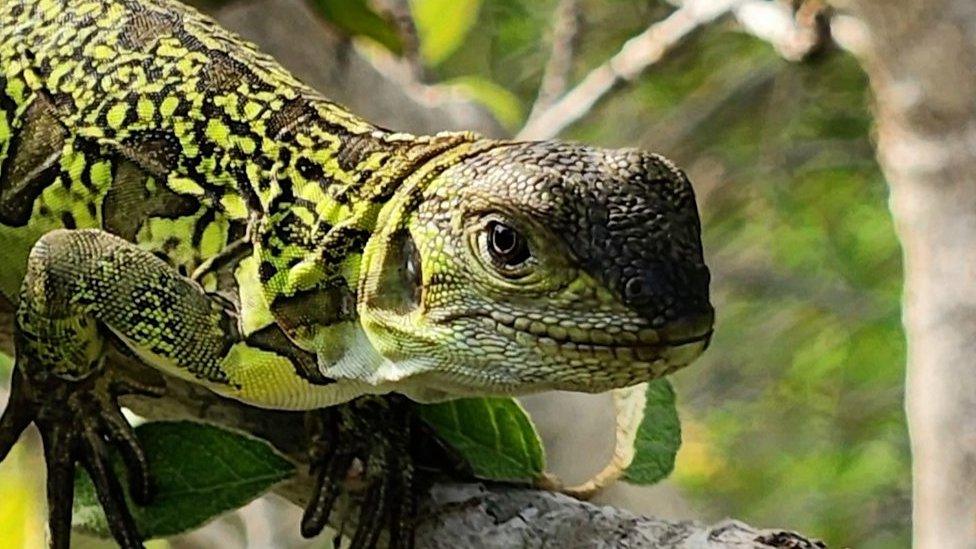Galapagos Islands: Critically endangered baby pink iguanas spotted for first time
- Published
- comments

The iguanas can grow up to around half a metre in length
Scientists have for the very first time discovered a number of baby pink iguanas in South America.
The animals can only be found in a small part of the Galapagos Islands which are located in the Pacific Ocean, off the coast of Ecuador.
Despite their name, pink iguanas are born green and only turn pink in colour later in life.
The species is considered critically endangered, with only a few hundred left in the world.
What did experts find?
Pink iguanas can only be found on the slopes of Wolf Volcano in the Galapagos Islands
The Galapagos Islands are home to a number of species not found anywhere else on the planet including giant tortoises, flightless cormorants and several species of iguanas - including the pink iguana.
The animals can grow close to 50cm in length and were first discovered by rangers in the national park around 35 years ago.
However, it was only just over ten years ago that scientists recognised the pink iguana as a separate species from others on the island.
Experts estimate there are only around 200-300 of the animals left in the world.
This is the first time that baby pink iguanas have ever been spotted on the Islands and conservationists are excited by the news.
Iguanas have three eyes! Their so-called "third eye" is found on top of their heads and helps the iguana sense light and movement.
Washington Tapia, Director of Galapagos Conservancy said: "This is an important discovery for the conservation of the species, which is on the brink of extinction.
"If we hadn't made this discovery, and if we hadn't fought the threats they are facing, they could become extinct in a few years."
Danny Rueda, head of the Galapagos National Park added: "This discovery marks a significant step forward, which allows us to identify a path going forward to save the pink iguana."
